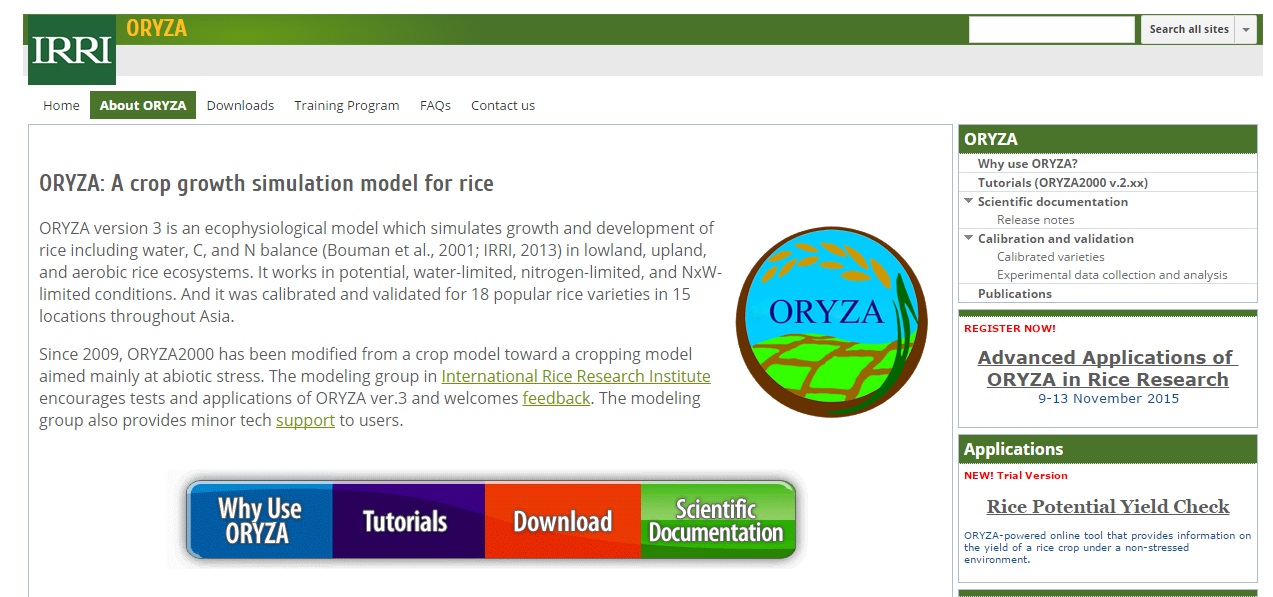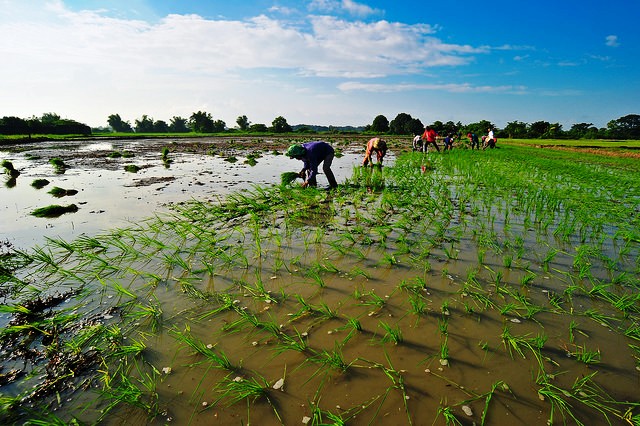A paper recently published in Nature Scientific Reports contends that crop models provide inaccurate estimates of rice yield projections under climate change scenarios due to biases of predicted phenology. This could mean projections for rice yield and supply may fall below expected levels and may not be enough to provide for rice consumers, which comprise half of the global population. Likewise, rice producers may not achieve their expected yield if the crop models used were inaccurate.
Crop models provide mathematical representations that help estimate crop yield under different weather and soil conditions, and crop management practices.
The study, which was conducted by the Institute of Atmospheric Physics in the Chinese Academy of Sciences, International Rice Research Institute (IRRI), China Agricultural University, and World Agroforestry Center, applied various crop phenology models to observe how varying temperatures affect the shifts in different growth stages of rice (phenology).
“As crop modelers, we often calibrate the models with observations of crop growth including phenology from the current climatic situations and assume that the same parameters can be extrapolated to warmer climate conditions,” says Tianyi Zhang, who led the study funded by the National Natural Science Foundation of China.
In earlier studies, such model calibration depends on a few observations of rice phenology under the current climate conditions. But will the assumption hold true under future warmer climates?
To answer this question the team collected rice phenology data from 775 trials in China, India, Bangladesh, the Philippines, and Thailand. The trials involved 19 rice cultivars grown across a vast span of temperatures. The differences between lower and higher temperature ranges were from 2.2 to 8.2°C, which is similar to the temperature increases from “current” to “future” in climate change scenarios.
For each cultivar, the team calibrated the crop model with phenology for lower temperature, to see how well it could represent the phenology for the same rice cultivar grown in the higher temperature range.
The team ran the simulation for each cultivar using four different rice phenology models: the growing-degree-day (GDD), exponential phenology, bilinear, and beta models.
Based on the simulation, the GDD and exponential phenology models were best able to capture phenology in higher temperature range and, therefore, could provide the most accurate yield projections. These models have no optimum temperature threshold for phenology development.
However, for the bilinear and beta models, which have an optimum temperature threshold, the accuracy gradually reduced at warmer climate conditions. The team found that each percent error in the simulated phenology resulted in a double error in yield.
“This is a rather worrying result as it means that many climate change impact studies have underestimated the yield decline,” says lead author Dr. Zhang. “Our study shows that the GDD and exponential models perform better both for rice phenology and yield simulations.”

Tao Li, co-author and senior crop modeler at IRRI, led the comparison of 16 popular rice crop models in The Agricultural Model Intercomparison and Improvement Project. The project found that different rice models made diverse predictions for rice yields in high-temperature ranges, indicating lower predictability under climate warming scenario.
“In using phenology crop models, over- or underestimation cannot be avoided,” says Dr. Li. “But we need to provide the most accurate estimation of rice yield, and we cannot do that without accurate phenology estimations. Improving the representation of phenology in contemporary rice crop models is an important step to enhance their predictive skills.”
The team concludes that many rice production outlooks have likely underestimated climate impacts by using the phenology model with optimal temperatures thresholds like the bilinear and beta models. Hence, the future food security for half of the world’s population could be at higher risk than previously expected.
Read full paper: Model biases in rice phenology under warmer climates







